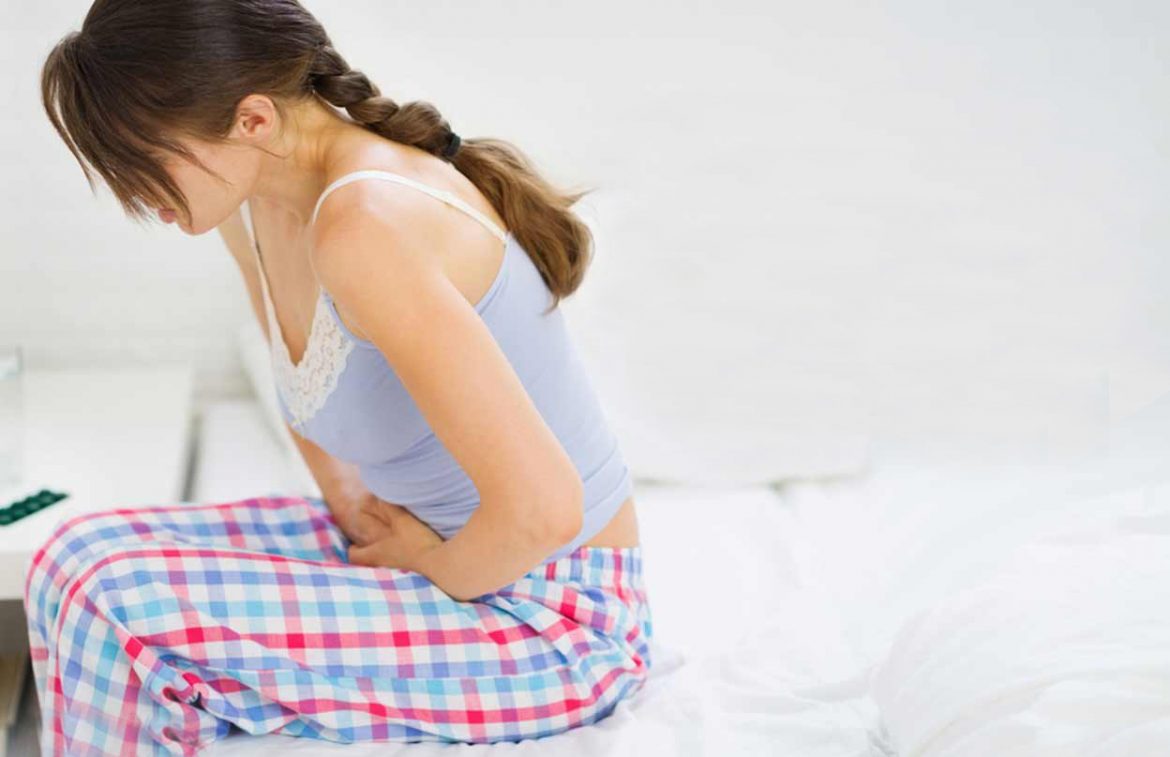
HOME REMEDIES FOR DYSMENORRHEA
- April 10, 2023
- Posted by Dr. Vaidya Karanvir Singh
- 0 Comment(s)
Painful menstrual periods that are caused due to uterine contractions is known as Dysmenorrhea. It is the most common gynecological condition faced by women in today’s world. This condition is categorized into two types Primary and Secondary.
- Primary dysmenorrhea : The menstrual cramps come backs over and over again. This type is not due to any underlying disease. Pain generally starts one or two days before the onset of menstrual cycle or at the start of cycle. Individual experience pain ranging from mild to severe in lower abdominal region, thighs or back and usually last 12-72 hours. Individual may experience symptoms like vomiting, nausea, diarrhea or fatigue in some cases.
- Secondary dysmenorrhea : Painful periods due to infection or disorder of female reproductive organs. The pain generally begins earlier in menstrual cycle and lasts longer than common menstrual cramps. Individual do not experience symptoms like vomiting, diarrhea, nausea or fatigue.
WHAT ARE THE CAUSES OF DYSMENORRHEA?
In Primary dysmenorrhea , excessive levels of prostaglandins, the hormones responsible for uterus contraction during menstruation and delivery, are considered to be primary cause of primary dysmenorrhea.
Causes of secondary dysmenorrhea are :
- Adenomyosis : In this condition the uterine lining grows into the muscles of uterus which cause uterus to get bigger in size . Along with that there is abnormal bleeding and pain.
- Endometriosis : Tissue lining the uterus is found outside uterus is called Endometriosis. Due to bleeding of these pieces during menstrual cycle there is scarring, swelling and pain.
- Cervical stenosis : Closing or narrowing of passageway through cervix is known as Cervical stenosis.
- Pelvic Inflammatory Disease (PID) : Infection caused due to bacteria which starts in uterus but can spread to other reproductive organs. This condition causes pain in abdomen or pain during inter-course.
- Fibroids : Non cancerous tissue growth inside, outside or on the walls of uterus is called Fibroids.
Table of Contents
WHAT ARE THE SYMPTOMS OF DYSMENORRHEA?
Common symptoms experienced by females includes :
- Dull, continuous ache
- Cramping or throbbing pain in lower abdominal region
- Pain radiates towards lower back and thighs
- Diarrhea
- Weakness
- Headaches
- Nausea
- Vomiting
- Fatigue
- Mood swings
- Fever
- Dizziness
AYURVEDA APPROACH
In Ayurved it can be correlated with ‘Kashtartava’. Vitiation of vata and pitta is said to be the main causes of development of this condition. Apana vata, a vata subtype is responsible for the downward movement but its vitiation due to various reasons is responsible for producing significant cramping and disconfort in lower abdomen.
Ayurved treatment helps to restore the balance by using herbs and panchakarma therapies. These therapies helps to get rid of the hurdles and make movement of Vata proper thus providing relief from discomfort and pain.
HOME REMEDIES :
-Using Hot Water Bottle
When heat is applied to skin the heat receptors get activated and tends to block the effect of chemical messengers which cause pain. Using hot water bottle on abdominal area during periods helps to relax the uterine muscles , reduce tightening of blood vessels and enhance the blood flow to uterus thus providing relief from pain.
-Drink Water
Staying hydrating is important for proper functioning of the body. During periods level of estrogen and progesterone is low that leads to retention of water in body, causing bloated and cramps. Intake of at least 8-10 glasses of water in a day during menstrual cycle helps to prevent bloating and cramps as it flush out toxins from the body.
-Peppermint
Menthol present in pepper mint helps to decrease muscle spasms thus helps to reduce stomach cramps. Prepare peppermint tea by boiling 5-6 peppermint leaves in a cup of water for 15-20 minutes. Strain it and consume the warm cup of tea to soothe the menstrual cramps.
-Parsley
It is rich in magnesium, calcium, vitamin B and iron thus helps to reduce bloating and menstrual pain. Juice made from parsley leaves should be taken twice a day during menstrual period helps to prevent excessive pain and cramps.
-Ginger
It has anti-oxidant and anti-inflammatory properties thus helps to minimize menstrual cramps and also relaxes the muscle spasm. Boil a piece of ginger in a cup of water for 10-15 minutes. Strain it and consume this drink thrice daily after meal.
-Basil
Basil leaves contain chemical compound called caffeic acid that acts as natural pain killer thus helps to reduce menstrual pain and cramps. Boil a cup of water and add 8-10 basil leaves , let it steep for some time. Strain it and drink this decoction every hour in periods to ease cramps.
-Cinnamon
It has anti-clotting, anti-inflammatory and anti-spasmodic properties thus helps to provide relief from menstrual pain and cramps. It is rich source of calcium, iron, manganese and dietary fiber. Boil a cinnamon stick in a cup of water for 10-15 minutes on low flame. Strain the decoction and let it cool down a bit. Consume this tea twice a day during periods to ease menstrual pain.

Dr. Vaidya Karanvir Singh is the younger Vaidya in Chandigarh Ayurved & Panchakarma Centre. He is the fourth generation in his family who is practicing as a general consultant in Ayurved & Panchakarma treatment at Chandigarh. In his practice, he had treated more than 1 Lakh Plus patients worldwide.

